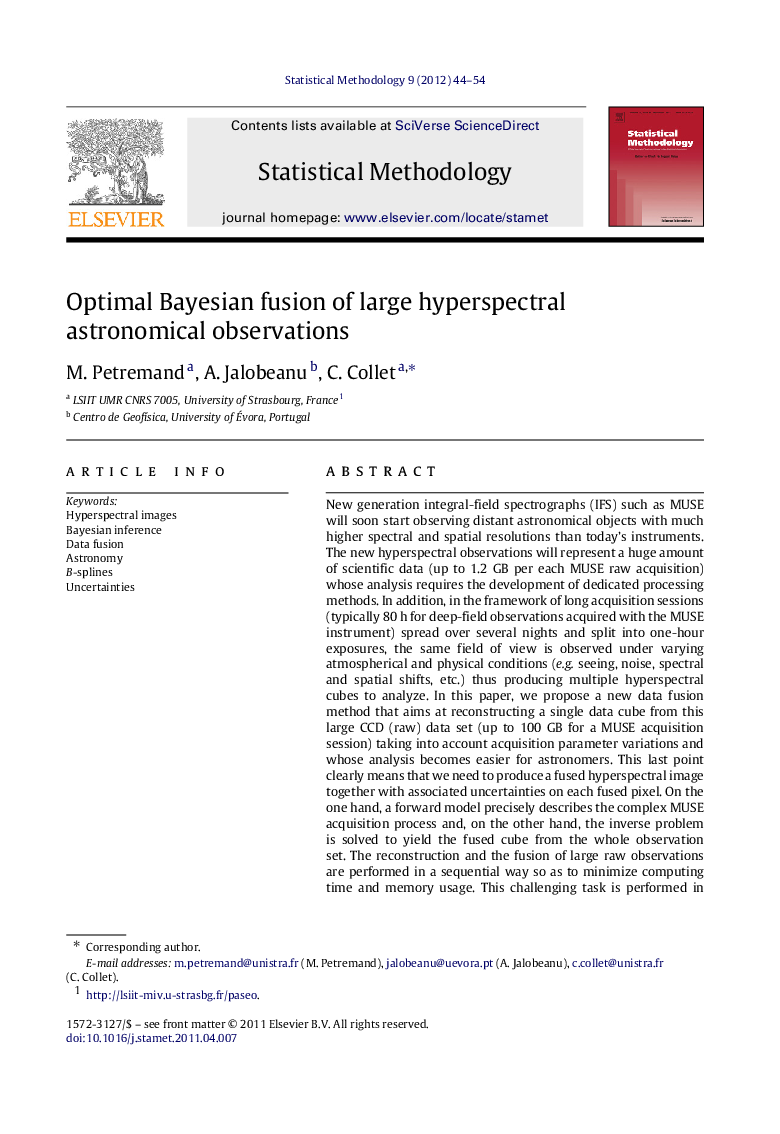| کد مقاله | کد نشریه | سال انتشار | مقاله انگلیسی | نسخه تمام متن |
|---|---|---|---|---|
| 1151183 | 1489830 | 2012 | 11 صفحه PDF | دانلود رایگان |

New generation integral-field spectrographs (IFS) such as MUSE will soon start observing distant astronomical objects with much higher spectral and spatial resolutions than today’s instruments. The new hyperspectral observations will represent a huge amount of scientific data (up to 1.2 GB per each MUSE raw acquisition) whose analysis requires the development of dedicated processing methods. In addition, in the framework of long acquisition sessions (typically 80 h for deep-field observations acquired with the MUSE instrument) spread over several nights and split into one-hour exposures, the same field of view is observed under varying atmospherical and physical conditions (e.g. seeing, noise, spectral and spatial shifts, etc.) thus producing multiple hyperspectral cubes to analyze. In this paper, we propose a new data fusion method that aims at reconstructing a single data cube from this large CCD (raw) data set (up to 100 GB for a MUSE acquisition session) taking into account acquisition parameter variations and whose analysis becomes easier for astronomers. This last point clearly means that we need to produce a fused hyperspectral image together with associated uncertainties on each fused pixel. On the one hand, a forward model precisely describes the complex MUSE acquisition process and, on the other hand, the inverse problem is solved to yield the fused cube from the whole observation set. The reconstruction and the fusion of large raw observations are performed in a sequential way so as to minimize computing time and memory usage. This challenging task is performed in the rigorous Bayesian framework, which provides a fusion scheme that is more optimal (in the statistical sense) than existing 3D reconstruction methods used in astronomy while giving access to uncertainties (in the form of a precision matrix) associated with the fused image: results can then be reused by astronomers for further analysis. The global fusion scheme is validated on small-size simulated observations with varying acquisition conditions while real MUSE raw observations will not be available before 2013.
Journal: Statistical Methodology - Volume 9, Issues 1–2, January–March 2012, Pages 44–54